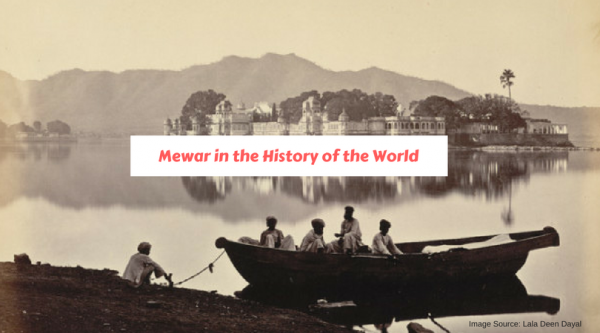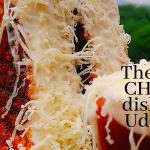Mewar and its lineage have been in light since ancient times for its greatness and grandeur. In classical India, it was said, that “The Maharana of Udaipur is the Sun of Hindutva.” Many ancient travelers visited our land and wrote about the glory and dignity of the state of Mewar. This time we bring you the excerpts (translated in English) from various ancient “Safarnamas” in which the visitors from faraway lands sang about the glory of Mewar.
Xuanzang– The traveler from China
About– He was a Buddhist monk, scholar, and traveler and visited India in 621 AD. He, in his book, mentioned about Vallabhi (presently a district in Gujarat) which was once the capital of ancestral kings of Udaipur. After the rampage and destruction in the city due to some battle, Mewar was properly formed.

Excerpt– “The lifestyle of people is somewhat influenced by Malwa region. There are undoubtedly 100 millionaires. The precious goods from all over the world can be seen here. The current king is the nephew of King Shiladitya of Malwa. His name is Dhruv Pat, and he is cheerful and, a bit, hot-tempered man. He seems to be least interested in ruling the kingdom. Every year, he holds a congregation, and he distributes precious jewels and exquisite food for seven days. He adores all the saints and deities with three dresses and medicines or equally valuable jewelry made of all seven kinds of precious stones. The king finds kindness as the greatest and he truly respects all those who are regarded as highly intellectual in the kingdom. He also honors all the monks and priests who come from foreign lands.”
Sulaiman-Al-Tajir – The traveler from Iran
About– Sulaiman was Muslim merchant, traveler, and writer from Iran and used to write in the Arabic language. He visited India and China in 851 AD. His Arabian works were translated in French and English by a French writer, Eusebius Renaudat.

Excerpt– “People of India and China believe that there are four most powerful kings in the world. In descending order of their power, the four kings are:
1) The King of Arabia
2) The King of China
3) The King of Greece
4) Balhara (the King of Mewar)
The Balhara is quite famous in India. All the Kings in India rule independently and are under no other king but they believe him to be the greatest. They honour him greatly. Like the King of Arab, he too distributes the gratuity lavishly. He owns many elephants and horses and possesses a ludicrous amount of treasure. Many of these kings lived for many years and some even ruled more than 50 years. Such is his generosity that even though the state is surrounded by enemy states, Balhara never orders the attack”
*Balhara is not any king particularly but all the kings of the clan were referred as Balhara.
François Bernier– The traveler from Paris
About– Mr. Bernier was a French physician and traveler. For a brief period of time, he was the personal physician of Dara Shikoh, the eldest son of Mughal Emperor Shah Jahan. After Dara Shikoh’s death, he was appointed to the court of Emperor Aurangzeb where he served for 12 years. He stayed in India from 1652-1669. He wrote about his experiences in India in his book, “Travels in the Mughal Empire” and wrote the following excerpt about Mewar and its bounty.

Excerpt– “There are more than 100 Kings who do not pay“Khiraj”. They are scattered all over the state with some being near and far from Agra and Delhi. Among them, 15-16 kings are unbelievably rich and strong, Especially, “Rana”, who was known as the “King of Kings” formerly and is known to be the descendant of King Porus*. If Rana, Jai Singh (King of Alwar) and Jaswant Singh (King of Marwar), join hands against Mughal Empire, they can be a huge threat to Mughal Empire because at a time, they possess, with them, the ability to take 20,000 soldiers to a battle. Nobody is as capable as these soldiers. They are known as “Sawaar-Rajput” (as in mounted on horses) and their warrior craftsmanship has been inherited from their warrior ancestors. The “Jagir” is given in the state at only one condition that whenever Times call (battle or a war), they should at once go wherever king orders them to.”
* In Col. Tod’s times, Sisodia Clan of Mewar claimed lineage from King Porus but these claims were based only on the fact that names of the descendants had supposed similarity with King Porus’s name.
Charles Umpherston Aitchison– Lieutenant Governor of Punjab from Scotland
About– Mr. Aitchison was born in 1832 in Edinburgh. In 1885 he took India’s first Civil Services Examinations and secured the fifth position. After several positions in and around Amritsar, he went on to become Lieutenant Governor of Punjab. He is also the founder of infamous Aitchison College, Lahore which was founded in 1886.

Excerpt– “The Royal Clan of Udaipur is the most prestigious and supreme amongst all the Rich Rajputs of India. King of Udaipur is said to be the descendant of the Ayodhya’s Raja Ram. This Royal Clan was founded by Raja Kanaksen of Vallabhi in 144 AD. The Kings of Dungarpur and Pratapgarh emerged from this Clan. Chhatrapati Shivaji Maharaj, who founded the power of Marathas, was the descendant of this clan. None was a dominion in India which could fight Muslims (Mughals) with such valor and bravery as this clan did. They took pride in the fact that they never married any of their daughters with a Muslim (Mughals) King and for quite some time, broke all the marriage-related affairs with those Rajput dominions who married off their daughters to Muslims (Mughals).”
John Malcolm– The Governor of Bombay from Scotland
About- Sir John Malcolm was born in 1769 in Eskdale, Scotland. He arrived at Madras in 1783 and was positioned as a regimental soldier in the Army of East India Company. He was appointed Governor of Bombay in 1827. He finally went back to Britain in 1831. In his memoir, “Central India,” he wrote the following excerpt related to Mewar.

Excerpt- He wrote about the King Of Malwa, Mahmood Khilji that “Khilji was captured by Rana Kumbha of Chittor and after some time he was mercy-released by him and his territories too were given back to him. Almost all the memoirs written till this time, have in them that how Rajput Kings used to have a huge victory over Muslim Kings again and again.”
Abul Fazl– The Author of Akbarnama
About- Shaikh Abu al-Fazal ibn Mubarak was the Prime Minister of Akbar and Author of the official written record of Akbar’s days as a Monarch. He was also amongst the nine gems of Akbar. The following excerpt is from Akbarnama.

Excerpt- “After Badshah’s Procession, even the Kings, who never served beneath any King, accepted to serve Akbar. But Rana Udai Singh, the oldest, the bravest and the one who built an empire through mountains, denied serving Badshah. As a result, Badshah had to capture the Fort of Chittorgarh.”
And so there might be very few Arabic, Persian, Urdu and Hindi books of Indian History which does not have in them the Greatness of Ranas of Udaipur written. There are numerous reasons as to why their greatness is so much celebrated. Firstly, The Chandravanshi and Suryavanshi Kings were said to be “The Greatest” in ancient India, especially the descendants of Raja Ramchandra and Royal Clan of Udaipur is said to be amongst the very first branches of this dynasty. And secondly, there are numerous accounts in history where this dynasty showcased its gallantry and valor by fighting Mughals bravely rather than surrender. Mewar and its Kings were, in a true sense, Royal because from generation to generation, each and every king brought nothing but prosperity and richness to Mewar.


